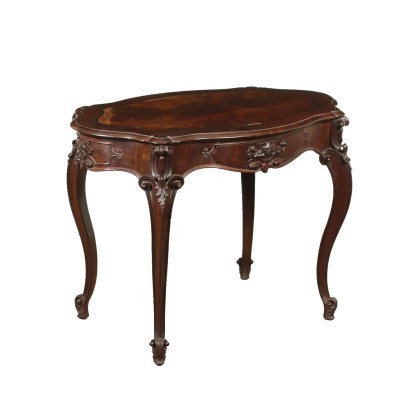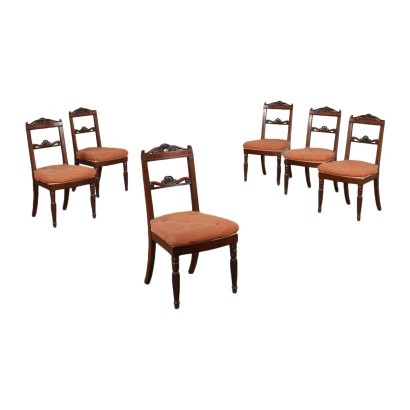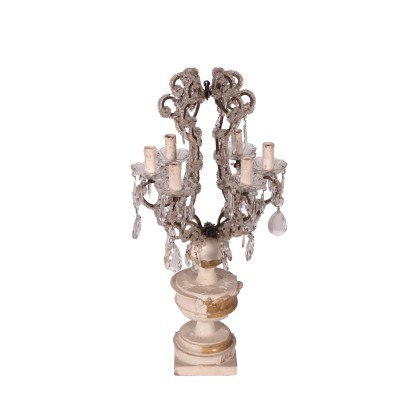Umbertino coffee table
Features
Style: Umbertino (1870-1900)
Age: 19th Century / 1801 - 1900
Origin: Italy
Main essence: Cherry , Mahogany , Poplar
Description
Umbertine coffee table supported by wavy legs ending in a curl carved with a leaf motif, it has a drawer in the shaped undertop band. In mahogany, it is carved with curl, foliate and mascaron motifs; the shaped top is threaded; poplar and cherry interior.
Product Condition:
Product that due to age and wear requires restoration and resumption of polishing.
Dimensions (cm):
Height: 79
Width: 105
Depth: 66
Additional Information
Style: Umbertino (1870-1900)
The name of this style is due to the ruler of the time Umberto I, appointed King of the Kingdom of Italy on 9 January 1878 and assassinated on 9 July 1900.The Umbertino style is typically Italian and belongs to that Eclectic period that characterized the second half of the 19th century, which lasted just under twenty years, the Umbertino style spread around 1880 and ended around 1895 when a new style called Liberty and universally known took over. like Art-Nouveau to be followed by Art-Decò.
In this style, mainly eclectic and monumental, Gothic and Baroque elements originally belonging to the Renaissance but also adorned with large masks, frames and decorations were re-proposed in the furniture, from the bedside table to the large wardrobe or sideboard.
Find out more about the Umbertine style with our insights:
An Umbertine secretary dedicated to Dante Alighieri
A comparison between a Luigi Filippo console and an Umbertina one
Age: 19th Century / 1801 - 1900
19th Century / 1801 - 1900Main essence:
Cherry
Obtained from prunus cerasus , a plant of oriental origin, it is a hard wood with a light and delicate color, with a reddish vein. Due to its diffusion and availability it was used in Europe in popular furniture. In cabinet making, in the seventeenth century, it was widely used in France and England for inlay work. In Italy it was very successful in Lucca. It was also very popular in the United States for the manufacture, from the late 1600s, of commonly used furniture.The dictionary of antiques: Eclecticism
Classic Monday: a sofa from the 1800s example of eclecticism
Mahogany
It is one of the most precious and sought-after woods in cabinet making. It was discovered in Central America around 1600 and began to be imported to England in the 1700s. Much appreciated for its hardness and indestructibility, it became widespread following the blocking of walnut exports from France in 1720 and the consequent elimination of English import duties on mahogany from the colonies in America and India. The most valuable version comes from Cuba, but it became very expensive. At the end of the 18th century it began to be used also in France in Louis XVI, Directory and Empire furniture, its diffusion declined starting from when Napoleon, in 1810, forbade its import. It was generally used in the manufacture of elegant furniture, due to its characteristics and beautiful grain.Poplar
Essence considered "poor", it is a white wood, with yellowish or greyish shades, light and tender, which is easily damaged. It is used for rustic furniture or in the construction of furniture. The most valuable use it has had in the history of furniture is in Germany, in the 19th century, for veneers and inlays in the Biedermeier period. It could also interest you



























